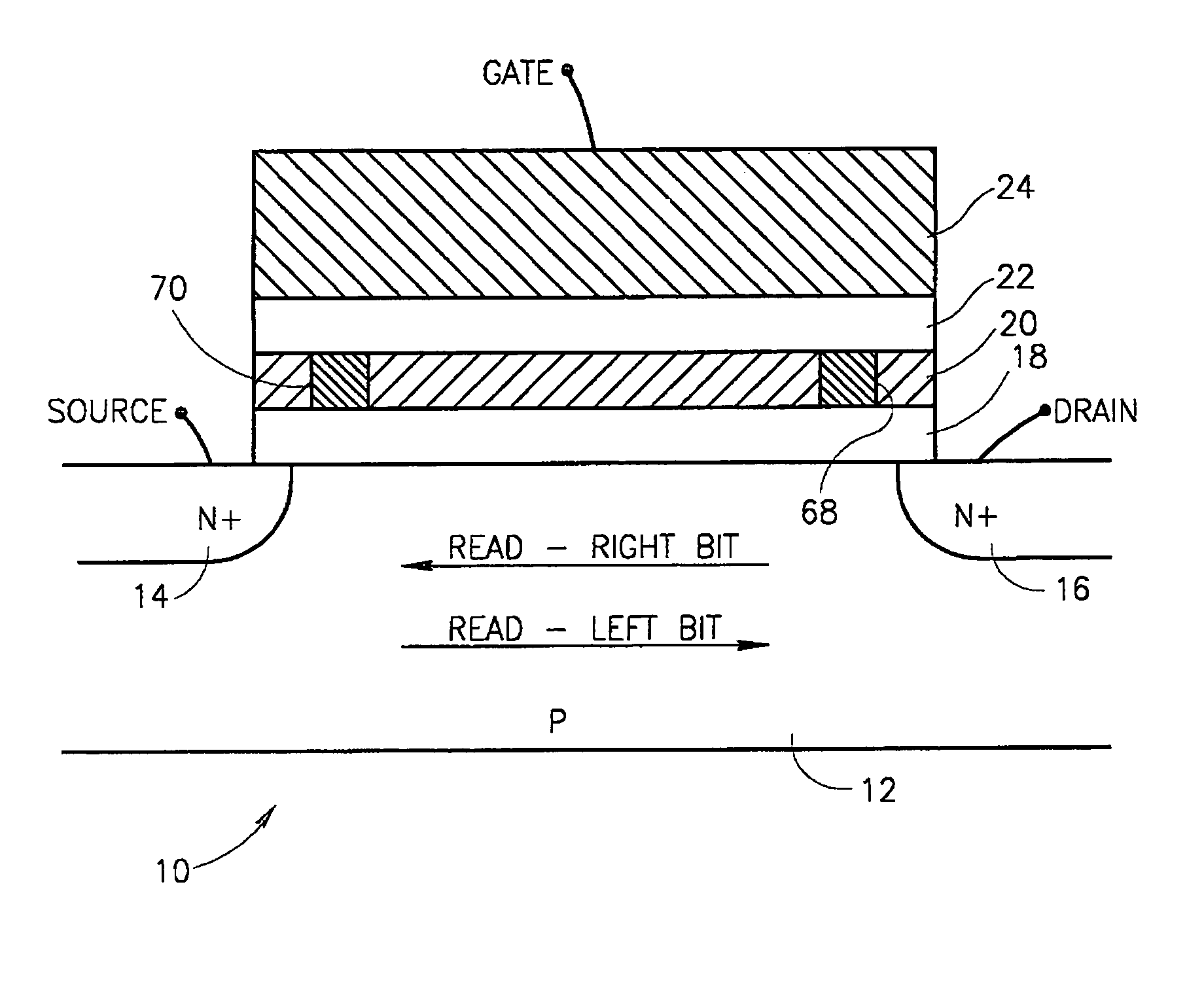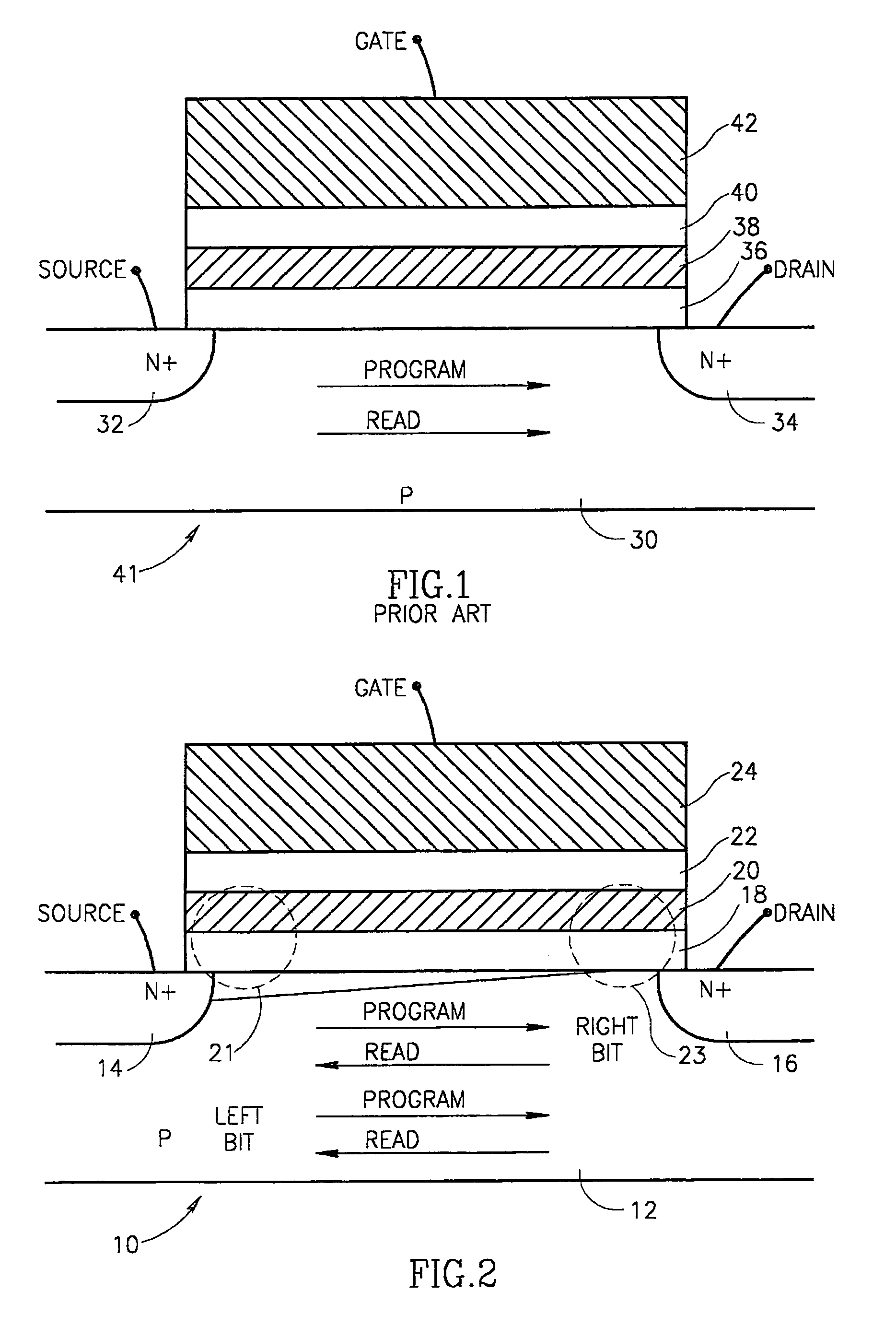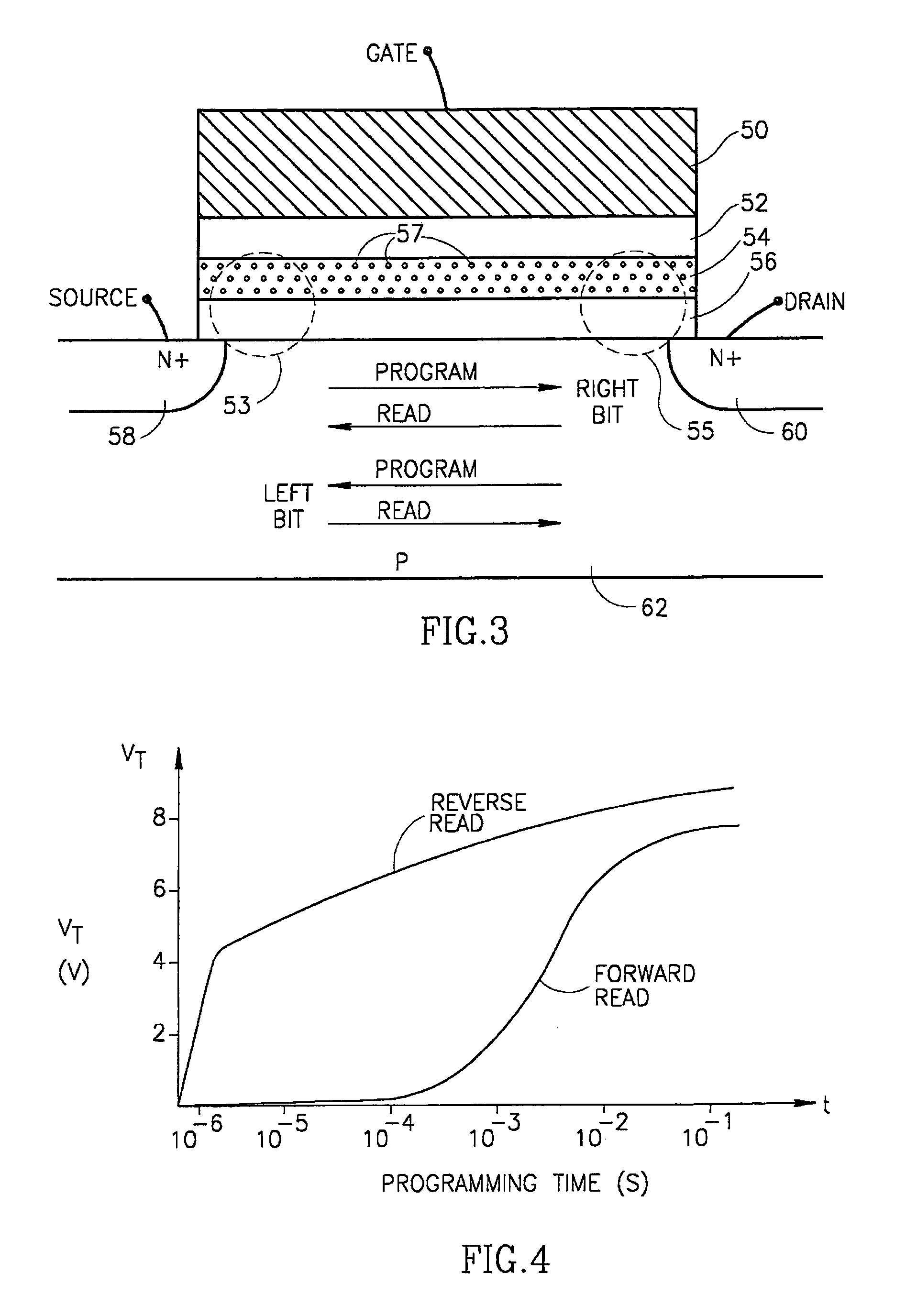Two bit non-volatile electrically erasable and programmable semiconductor memory cell utilizing asymmetrical charge trapping
a technology of asymmetric charge trapping and semiconductor memory cells, which is applied in the direction of digital storage, transistors, instruments, etc., can solve the problem that the programing of one bit has a very small effect on the other bit, and achieves the effects of reducing the potential drop across the portion of the channel beneath the trapped charge region, accelerating programming times, and enhancing the erase mechanism of memory cells
- Summary
- Abstract
- Description
- Claims
- Application Information
AI Technical Summary
Benefits of technology
Problems solved by technology
Method used
Image
Examples
Embodiment Construction
[0071]The two bit flash EEPROM cell of the present invention can best be understood with an understanding of how present day single bit charge trapping dielectric flash EEPROM memory cells are constructed, programmed and read. Thus, prior art single bit ONO EEPROM memory cells and the conventional method used to program, read and erase them are described in some detail. Illustrated in FIG. 1 is a cross section of a conventional ONO EEPROM memory cell as disclosed in the technical article entitled “A True Single-Transistor Oxide-Nitride-Oxide EEPROM Device,” T. Y. Chan, K. K. Young and Chenming Hu, IEEE Electron Device Letters, March 1987, incorporated herein by reference. The memory cell, generally referenced 41, comprises a P-type silicon substrate 30, two PN junctions between N+ source and drain regions 32, 34 and P type substrate 30, a non conducting nitride layer 38 sandwiched between two oxide layers 36, 40 and a polycrystalline conducting layer 42.
Programming Prior Art Single ...
PUM
 Login to View More
Login to View More Abstract
Description
Claims
Application Information
 Login to View More
Login to View More - R&D
- Intellectual Property
- Life Sciences
- Materials
- Tech Scout
- Unparalleled Data Quality
- Higher Quality Content
- 60% Fewer Hallucinations
Browse by: Latest US Patents, China's latest patents, Technical Efficacy Thesaurus, Application Domain, Technology Topic, Popular Technical Reports.
© 2025 PatSnap. All rights reserved.Legal|Privacy policy|Modern Slavery Act Transparency Statement|Sitemap|About US| Contact US: help@patsnap.com



